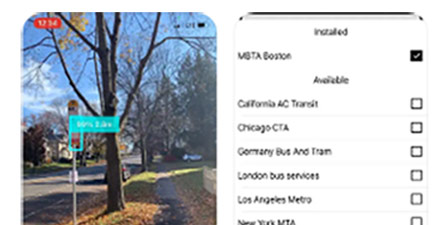By Linda Conlin, Pro to Pro Managing Editor

In a recent chat with my dear friend, I learned that she assists a friend who is visually impaired, and I wanted to know more. Although she isn’t an ophthalmic professional, MaryEllen seemed to know instinctively how to help Annie, and shared her insights.
Annie has early onset, or inherited, Macular Degeneration. She was diagnosed in her 30’s and is now 84. Annie was very dependent on her husband, Dick. Sadly, he died about eight years ago. Her daughter lives in Florida, and her son is a pilot, busy raising a young family. MaryEllen and her husband Pat would take Annie out for lunch about once a month after Dick died. They all had known each other as couples, but now they were getting to know Annie as an individual and beginning to learn her needs, without Dick being around.
About a year after Dick died, Annie needed heart surgery to have her aortic valve replaced. Once she recuperated and healed, she was ready for Cardiac Rehab. MaryEllen drove her each week to a local hospital, waited while she attended her class, then drove her home. The more they talked, the more MaryEllen became aware of Annie’s needs. She started picking things up from the grocery store for her, then driving her to the grocery store and for other errands. When she had a doctor or dentist appointment, MaryEllen drove her to the appointment, sat and chatted while waiting, then drove her home. She helps Annie find things in the grocery store and reads labels. MaryEllen is very aware of Annie walking in a parking lot and navigating curbs. Annie has difficulty filling out a check and reading cards and notes from friends. That’s a simple task for MaryEllen. Many doctor’s offices ask patients to check in using an electronic touchscreen. That’s impossible for Annie. The one that shocked MaryEllen the most was at the Ophthalmologist’s office. The print on the touchscreen was tiny. Again, this is a simple task for MaryEllen, and she’s happy to do it, but it was truly “eye” opening!
I asked MaryEllen if she had training as a visual guide. She replied that she had no formal training, but she did have a Special Education Degree from Rivier College in Nashua, NH. “I had courses that taught about being legally blind. I was a paraprofessional in a high school for more than two years before teaching first grade in a local elementary school for 20 years. I had many opportunities to help students with their vision needs. Some needed to be closer to a blackboard, the book that was being read, or they needed the printed material directly on their desk. I also learned from a friend during the 90’s who was legally blind and needed a lot of help for herself and her two young children.”
Presently, Annie lives in her own apartment in a 50+ Community. She can independently take care of her personal needs, get herself around the building she lives in, and make simple meals using a microwave, toaster oven, and electric tea kettle. She can’t drive, read small print, distinguish colors, or recognize people coming toward her, but Annie has many visual aids in her apartment. She has a telephone that announces the caller, a TV remote with large numbers and ‘talks,’ an audio book reader, and a very large magnifier. She also uses smaller magnifiers around the apartment. Annie always has been an avid reader, and continues to use a Kindle, but it’s very slow because she needs the print to be so ‘HUGE.’ She uses an iPad. It has very large print and ‘talks’ to her. She can email and order from Amazon. Many of the resources that Annie has have come from the state. People should know that many states provide aids for people with visual impairment.
Color coding is very important to Annie. For example, it is in a red can, it has a yellow cap, blue box, etc…….but, don’t change the color! Another important aid is placement of items. This is how Annie can stay in her apartment. She knows where everything is. This also applies to stores. She gets to know where things are, but it becomes very frustrating if things get moved around. MaryEllen is very aware of the importance of placement of items for a person who is legally blind. She’s very aware of safety, too; that is, tripping, curbs, and making her friend aware of the surroundings that she can’t see.
As eyecare professionals, we need not only to know about conditions that limit vision, but to be prepared to offer visual aids and information about available resources, and certainly to ensure that our offices accommodate people with vision impairment. Thank you, MaryEllen, for sharing this story to raise our awareness of what daily life for those with vision limitations is like.












